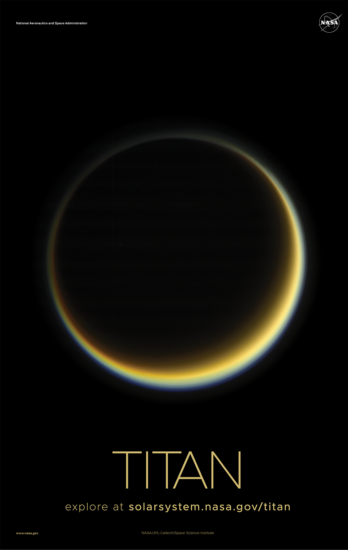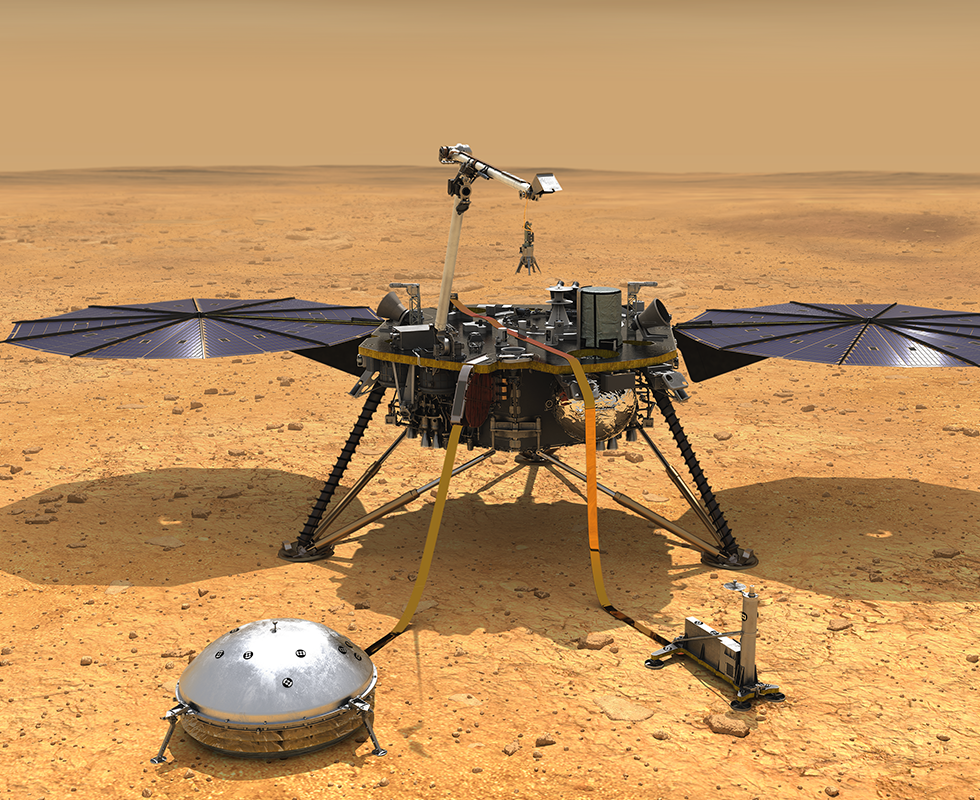
Earth sciences isn’t just for Earth
Truth be told, W. Bruce Banerdt dreamed of becoming an astronaut. Space fascinated him as a young boy, and the thought of rockets and satellites surging through the universe sparked curiosity and excitement.
But Banerdt’s academic career pushed in other directions. He earned an undergraduate degree in physics in 1975 followed by a PhD in geological sciences in 1983, both from the USC Dornsife College of Letters, Arts and Sciences, and he seemed tethered to studying the history, nature, materials and processes of Earth, not outer space. That is until a graduate school colleague mentioned a summer internship studying the moon at NASA’s Jet Propulsion Laboratory (JPL) in Pasadena, California.
“To use the skills and knowledge I had acquired in physics and geology but in connection to space, well, it seemed too good to be true,” Banerdt says.
At JPL, Banerdt discovered Earth scientists played a significant role in understanding planets beyond our own, a mission Banerdt himself embraced with an inquisitive and enterprising spirit as an intern and, later, as a research scientist. Over a 45-year career at JPL, Banerdt worked extensively on projects investigating Mars, while also contributing to efforts exploring Venus as well as Jupiter’s satellites.
As it turns out, space exploration isn’t merely the domain of pioneering astronauts like Neil Armstrong ’70 or James Lovell ’61, or the bailiwick of those at NASA or SpaceX. Banerdt, in fact, is among a number of USC Dornsife-connected Earth scientists — faculty, students and alumni among them — expanding human understanding of the solar system and laboring to unpack its many mysteries.
Trojans exploring the universe

Like Banerdt, Maya Yanez developed an early fascination with outer space. Holding an undergraduate degree in astronomy, the Los Angeles native is now a fifth-year PhD candidate in USC Dornsife’s Department of Earth Sciencesand a former JPL intern.
Yanez’s doctoral studies focus on Titan, Saturn’s largest moon and, by some metrics at least, the solar system’s most Earth-like body. Titan is also one of only six places in the entire universe on which humans have landed a robot. In studying Titan’s current conditions, Yanez inspects similarities between where Titan is today and where the Earth might have been eons ago.
“We don’t know what we’re going to find, but everything — the data and the observations we make — informs our next steps, future projects, instrumentation and studies as well as the goals we’re setting for our next mission,” says Yanez, who works in the lab of Jan Amend, professor of Earth sciences and biological sciences.
The overarching goal, Yanez continues, is to better understand the habitability of Titan, the solar system’s only other world with stable liquids on its surface.
“In Earth, we have one example of life we have poked, prodded and studied, and we can use that to explore how life evolved elsewhere,” she says.
Many other USC-affiliated Earth scientists are similarly researching outer space.
Two USC Dornsife alumni, Laurie Barge ’09 and Scott Perl ’19, for instance, lead JPL’s Origins and Habitability Lab. Barge, Perl and their team of astrobiologists continue exploring the origin of life on Earth as well as if, and how, life could have started on other worlds. The lab also investigates how Earthly life persists amid extreme environments and the geochemical processes that make a planet habitable.
Professor of Earth Sciences Frank Corsetti, meanwhile, is a geologist who studies biosignatures, or signs of life. Corsetti’s research, heavily fueled by funding from NASA, aims to understand the evolution of life on Earth as well as the necessary parameters to create and sustain life. His work informs the search for clues and patterns of potential biosignatures on Mars.

And Banerdt capped his JPL career by directing the center’s Mars InSight Mission, which included designing, building and landing a seismometer on Mars. The instrument measured quakes and vibrations on Mars’s surface, offering rich insights into the basic building blocks of Earth’s closest planetary neighbor to help scientists develop theories and craft future experiments.
“It’s almost like doing an MRI of Mars,” says Banerdt, who likened InSight to scientists’ early 20th-century examinations of the Earth’s interior. “The composition and structure of a planet’s interior affects the surface environment of that planet, which is what makes life possible or impossible there.”
Earth scientists looking beyond the planet
While Earth scientists often focus on pressing global challenges like sustainability, water resources, climate change and natural resources, Corsetti and others say taking Earth sciences to outer space isn’t as wild or disconnected as it might initially seem. Studying the Earth — its origins, its environment and its materials — extends human knowledge of the solar system in powerful ways.
“When you step back 10 million miles, you realize Earth is just a planet, like many other planets, orbiting the sun,” says Banerdt, who retired from JPL last summer. “The same tools we use to study Earth can be used to study other planets and, similarly, we can use the study of other planets to inform our understanding of Earth.”
Such efforts position Earth’s inhabitants to address one of humanity’s most burning questions: Are we alone? Society can only begin to answer that question by first understanding how life evolved on Earth. Thereafter, Earth scientists can leverage their toolkits, like processes for chemical analysis, and instruments such as robotic rovers, particle detectors and spectrographs to develop greater clarity.
“Maybe we won’t find the evidence, but at least we can constrain what is possible, and that in itself is scientific progress,” Corsetti says.
It’s an undeniably energizing pursuit for Earth scientists like Yanez, who recalls looking up into the nighttime sky as a child and wondering about life beyond the planet.
“We have no idea what we don’t know,” she says. “To begin to use what we know to understand what we don’t know is super exciting to me, and I’m constantly being surprised because there are so many firsts left in space to discover.”